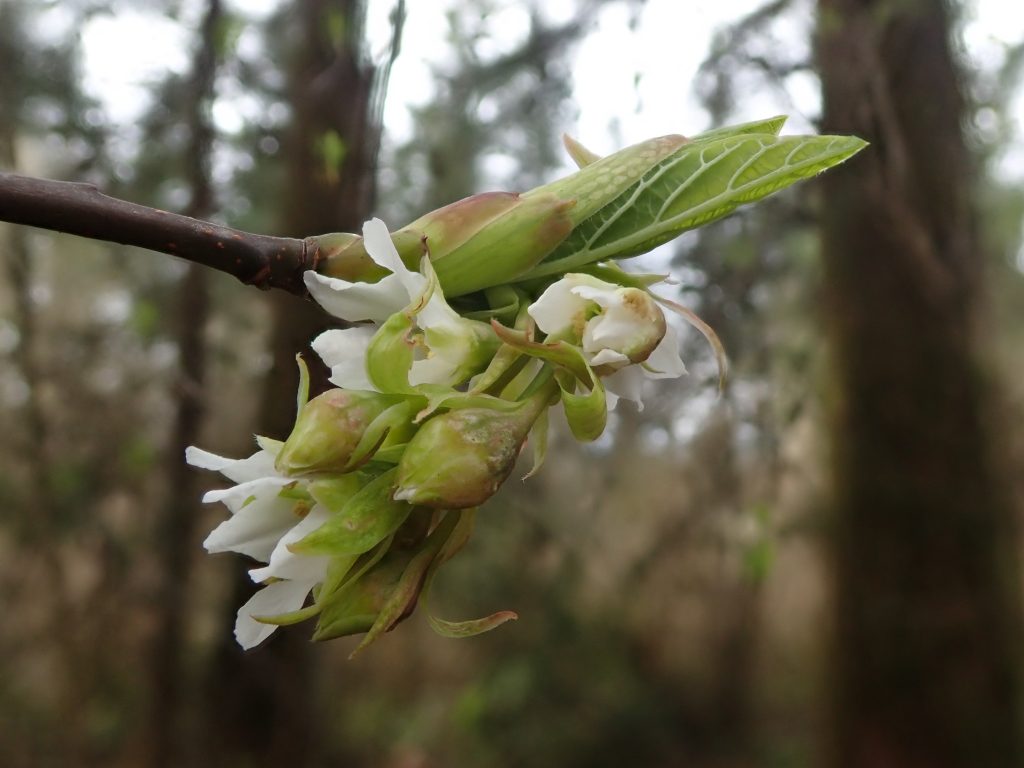
It is always a happy day when I find my first blooming Oemleria cerasiformis of the year, because I know winter is losing its grip and spring is on the horizon. These shrubs have many common names; osoberry, Indian plum, Oregon plum, bird cherry, skunk bush etc. That last one is because the flowers produce an acrid and decidedly unfloral scent (cat urine is often mentioned) which some people find distasteful, and the leaves have something of an aroma of cucumbers.
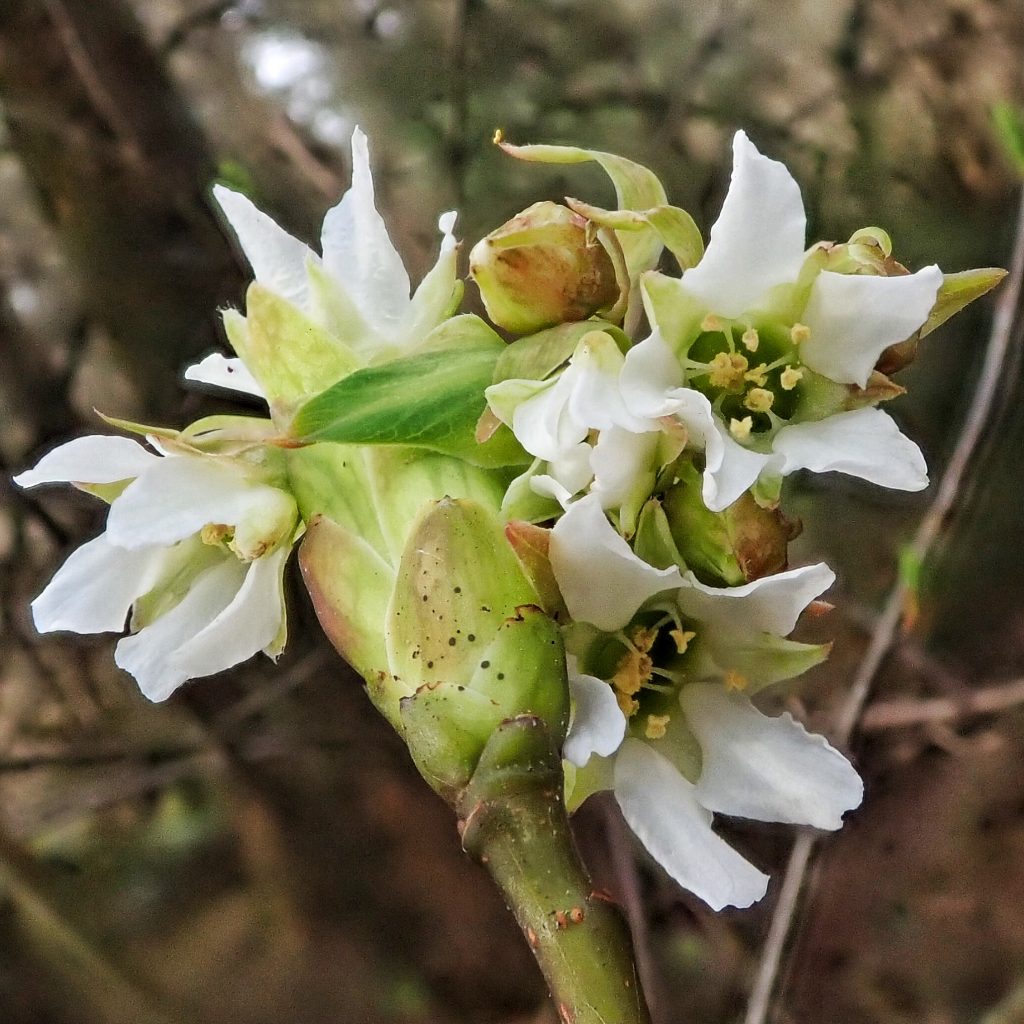
A little over a decade ago this was the initial botanical identification which really vexed me. The first time I actually went out looking for wildflowers, a few days after the trip to Catherine Creek that I describe in my mission statement, Pam and I took a stroll around Battleground Lake, and these were blooming everywhere along the trail. My resources were limited, and I was greener than a freshly unfurled osoberry leaf, but it didn’t seem like it should be that hard to figure out.
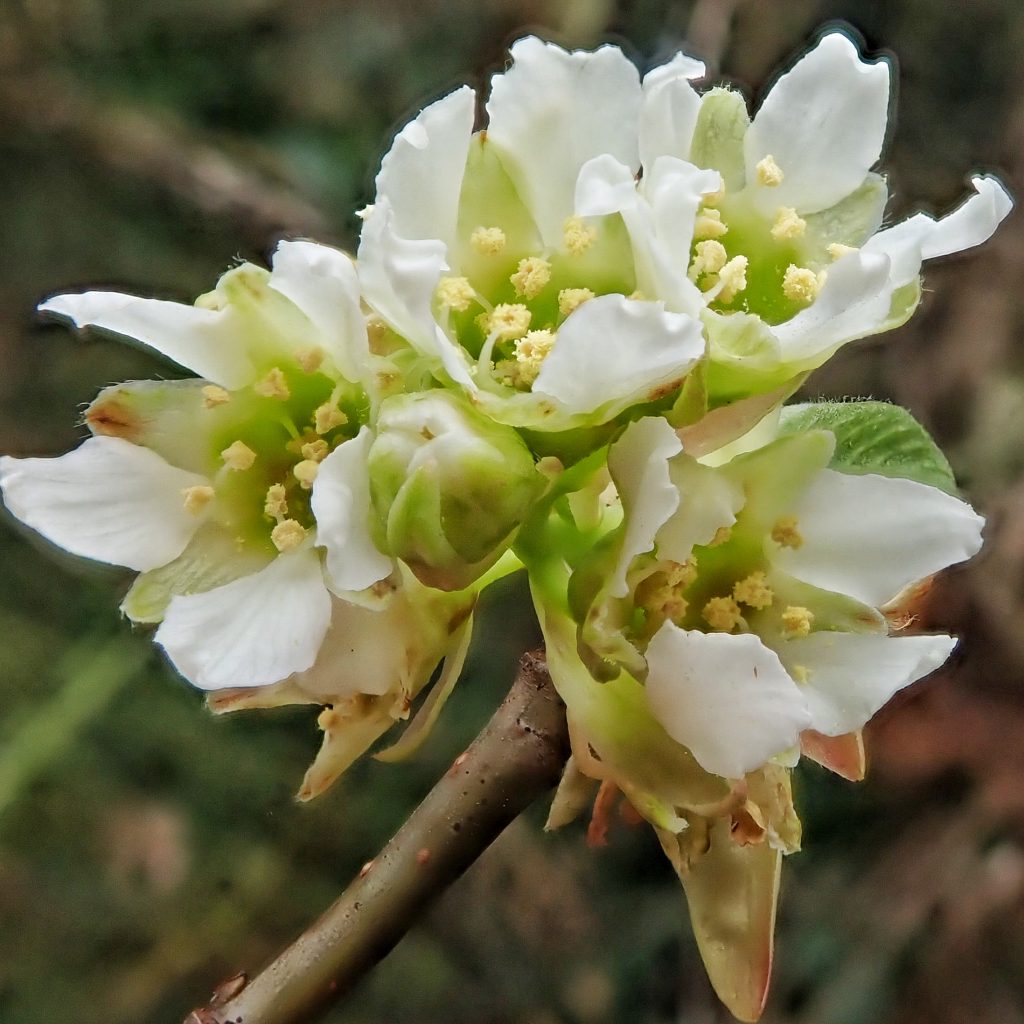
By the time I got ‘Wildflowers of the Pacific Northwest (Turner/Gustafson), my first real wildflower field guide, they were done blooming. But paging through it in that first blush of new love, admiring all of the beautiful flowers I hoped to find, I stumbled across a photo of Oemleria cerasiformis, and startled poor Pam half to death by shouting out ‘INDIAN PLUM!’. I think she has since forgiven me for that, since it is actually one of the least obnoxious things my natural history obsession has caused me to do.
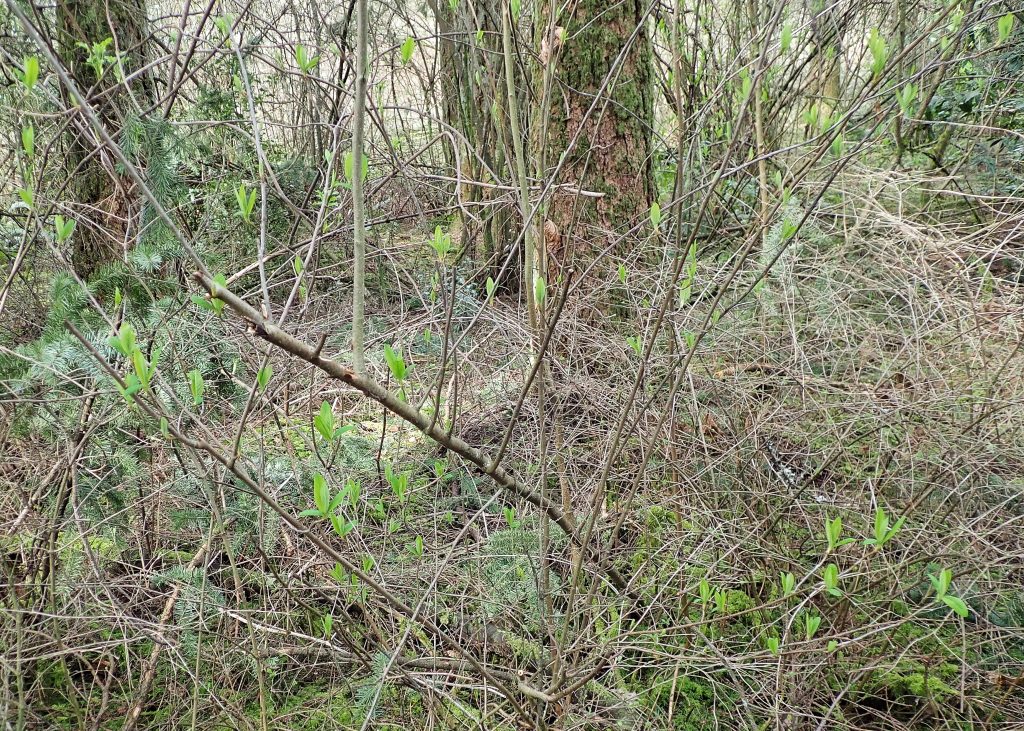
I was particularly happy to find these shrubs on Monday because my friend David Wagner had recently posted photos showing the difference between male and female flowers. I had heard before about there being separate male and female plants, but I had never taken the time to figure out how to differentiate them. Now, armed with his photos, I knew them when I found them, and was able to document them for this post.
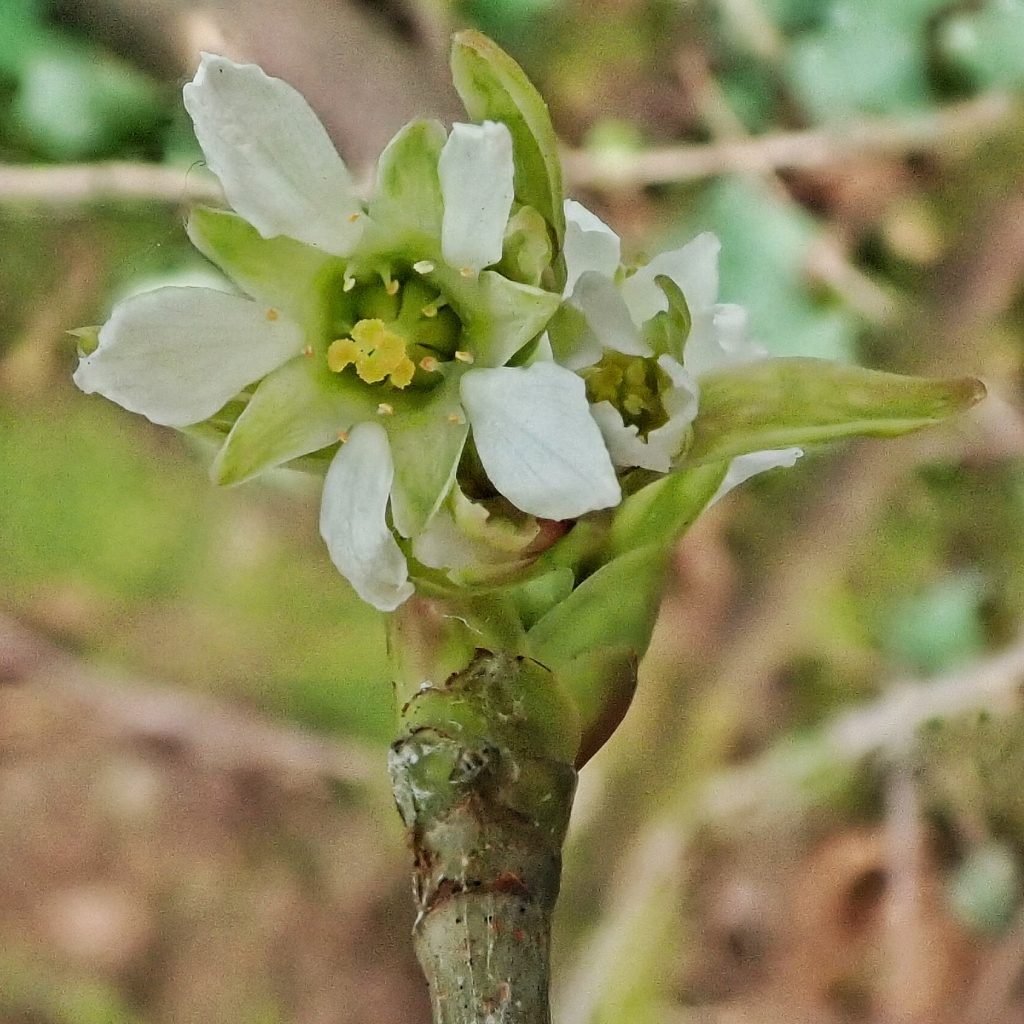
Because of their position as the first native shrub to bloom Oemleria cerasiformis is a real boon to hummingbirds and early season insects, a rare nectar and pollen source during the lengthening days of late winter, as well as being a balm to the eyes of woods trompers hungry for the sight of any sign that the long dormancy of winter is nearing an end.
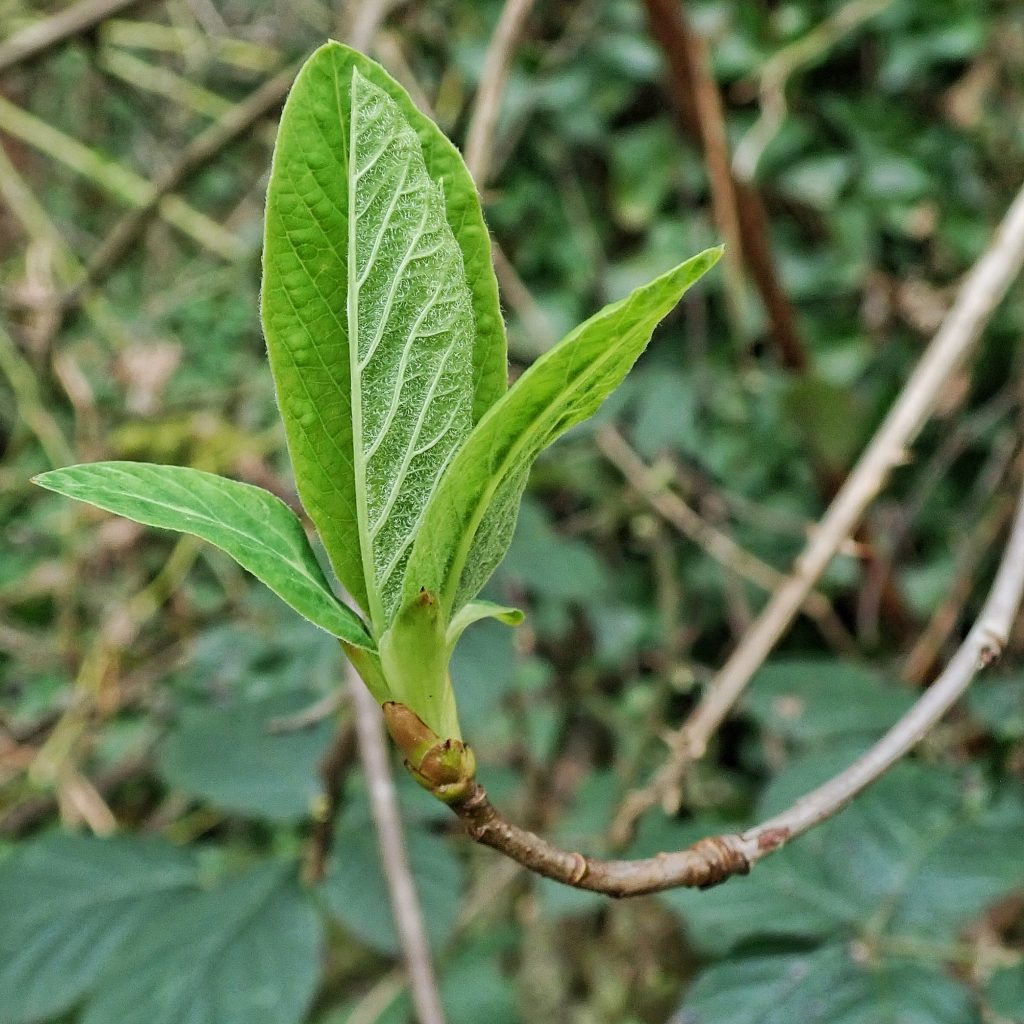
Indigenous peoples made a medicinal tea from the bark (used to treat tuberculosis and constipation), chewed the stems as an analgesic and aphrodisiac, and ate the fruits (called drupes because of the thin skin and large stone), which need to be fully ripe to lose a rather bitter taste.
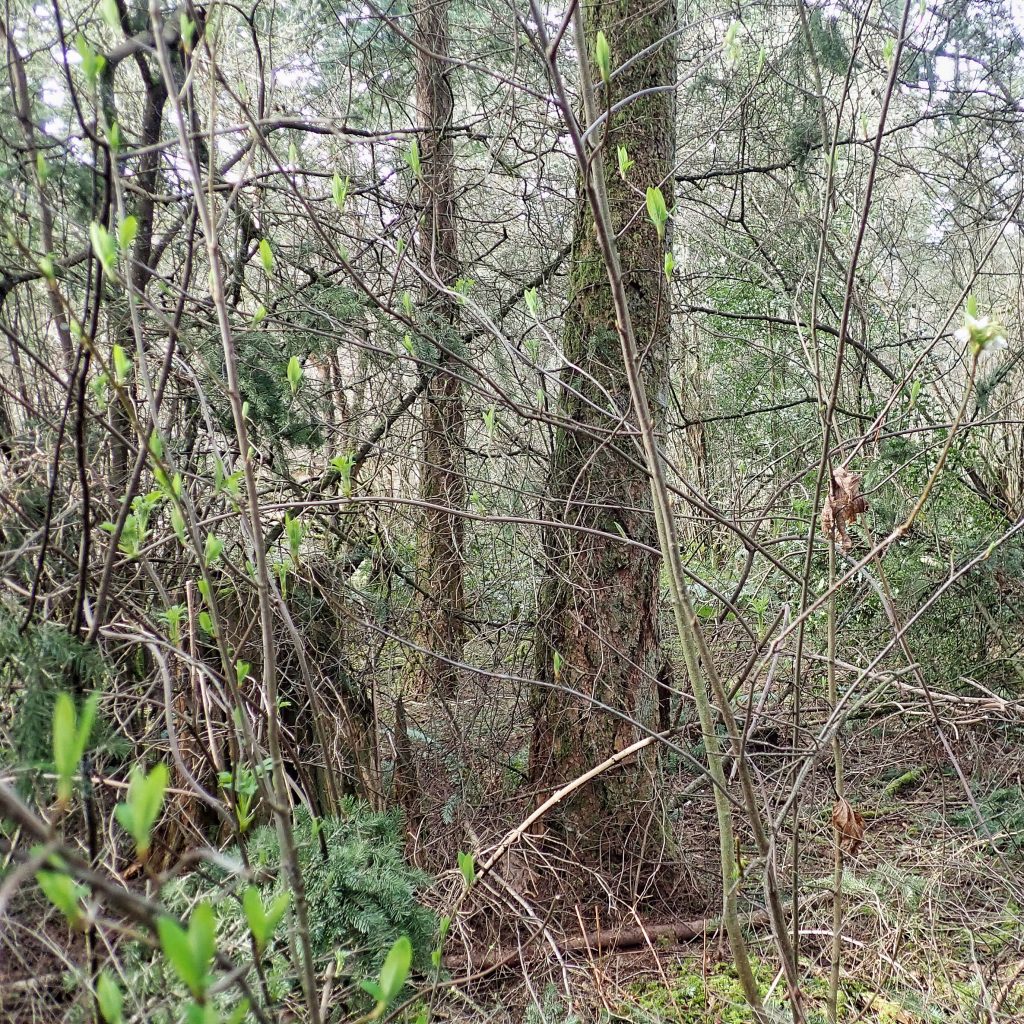
Besides propagating via seeds Oemleria cerasiformis also spreads by putting out rhizomes which produce suckers, and eventually new plants. And drooping limbs act somewhat stoloniferus by rooting where they touch the earth. These traits, in conjunction with a large root system, make this a favored shrub in revegatation projects where erosion is a problem, such as along stream banks and denuded hillsides, or after landslides, as well as any restoration project where providing food for wildlife is a consideration. There is much to like and to admire about these ecologically important but unprepossessing shrubs.
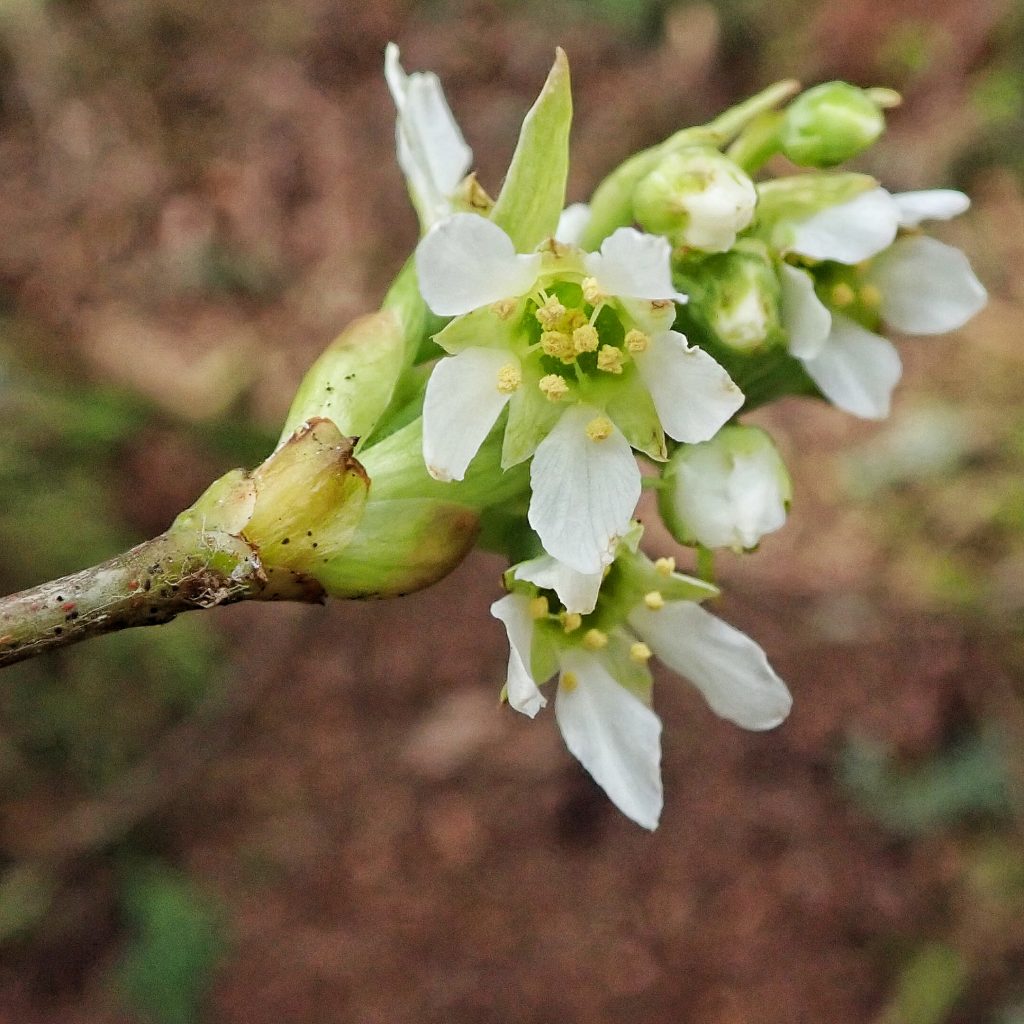
Description-Shrub or small tree, up to 15’ tall, more or less erect with some bowed limbs, which will root if contacting the ground; bark purplish brown; twigs green to reddish brown; leaves alternating, narrowly oblong to ovate, often hairy on the ventral side, pointed, with smooth, untoothed edges; male and female flowers on separate plants; flowers small (petals about .25” long), bell shaped, 5 petalled, white to cream, in pendant clusters at branch tips and leaf axils; flowers appear before leaf out; fruit salmon colored until ripe, bluish purple to black at maturity.
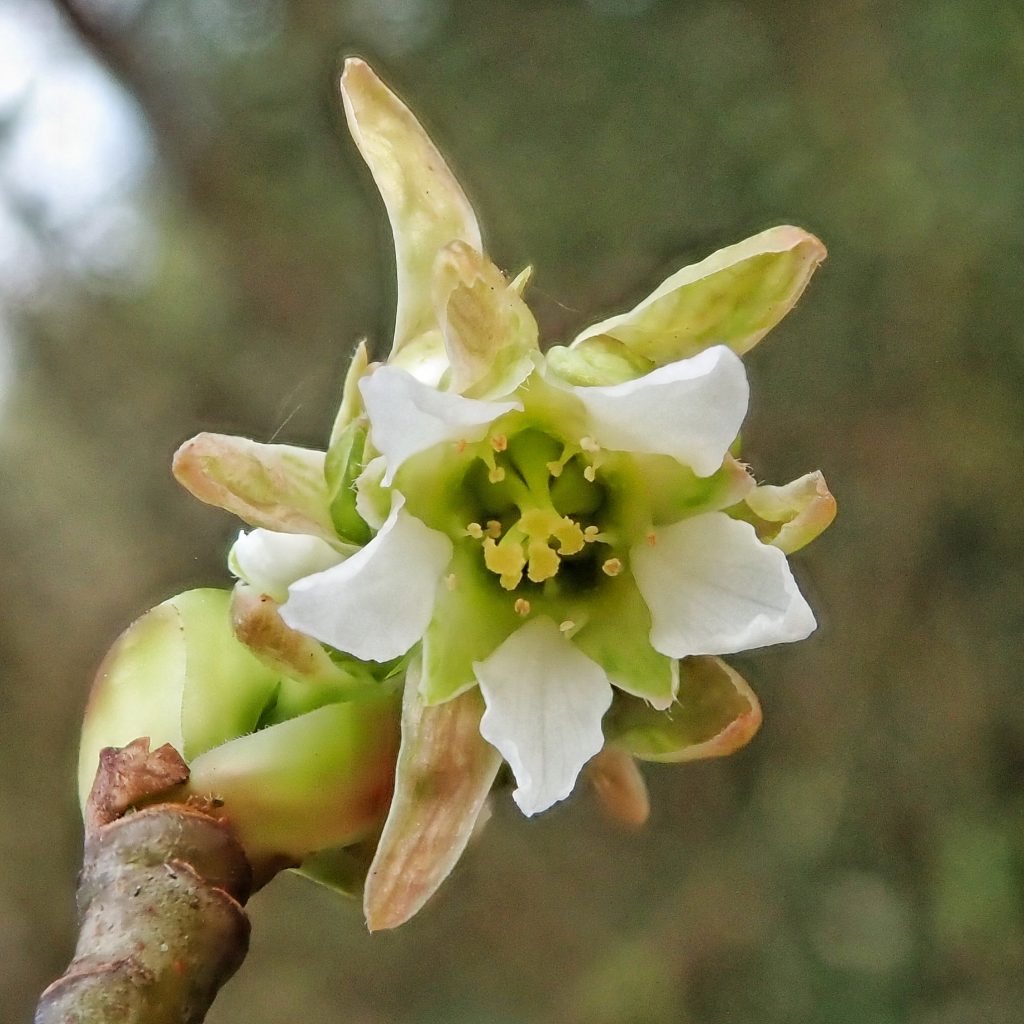
Similar species– Leaves are vaguely willow like, but the presence of flowers or fruits should quash that idea; cherries, plums, and crabapples have shorter and broader leaves
Habitat– Tends to prefer moist areas with well drained soil and at least partial shade; found in open forests and forest edges, on the drier margins of wetlands, and in riparian corridors at low to middle elevations.
Range-Pacific Coast endemic; primarily west of the Cascades in our region, although it extends east in the Columbia River Gorge.
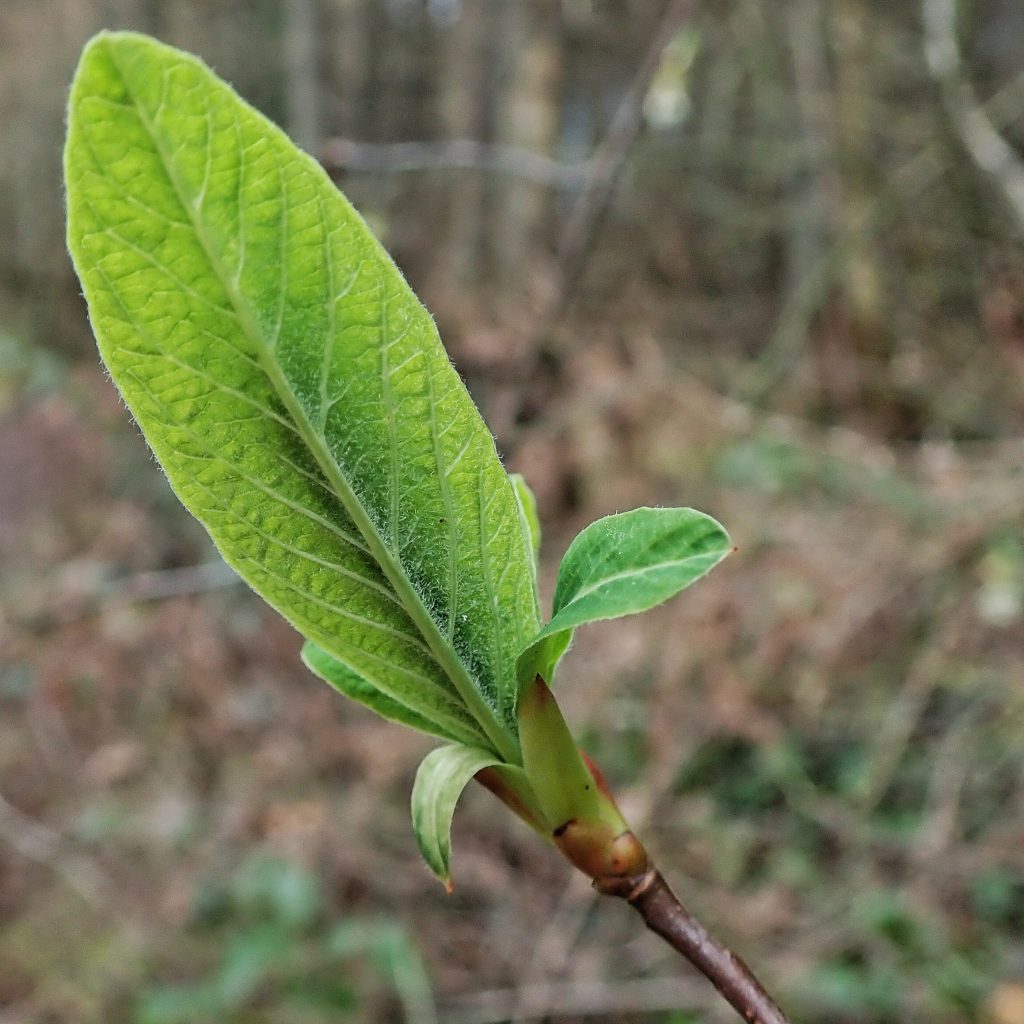
Reproductive timing– One of the earliest native plants to flower in the spring; by mid February the male flowers are opening, often before the plant begins to leaf out; female flowers open a week to ten days later; its fruit begins to ripen in mid May.
Eaten by-Many early season insects are attracted by the nectar and pollen; the moths Homorthodes furfata, Adelphagrotis stellaris, Graphiphora augur, Tetracis jubararia and many others use it as a host plant for their larva; many fruit eating birds (such as Cedar Waxwings, Western Tanagers, Bullock’s Orioles, and American Robins), and mammals consume these relatively early ripening fruits.
Etymology of names– Oemleria honors Augustus Gottlieb Oemler (1773-1852), a German naturalist from Savannah, Georgia, who was the first to collect the species. The specific epithet cerasiformis means ‘cherry-like’ in Latin, and refers to the fruit.
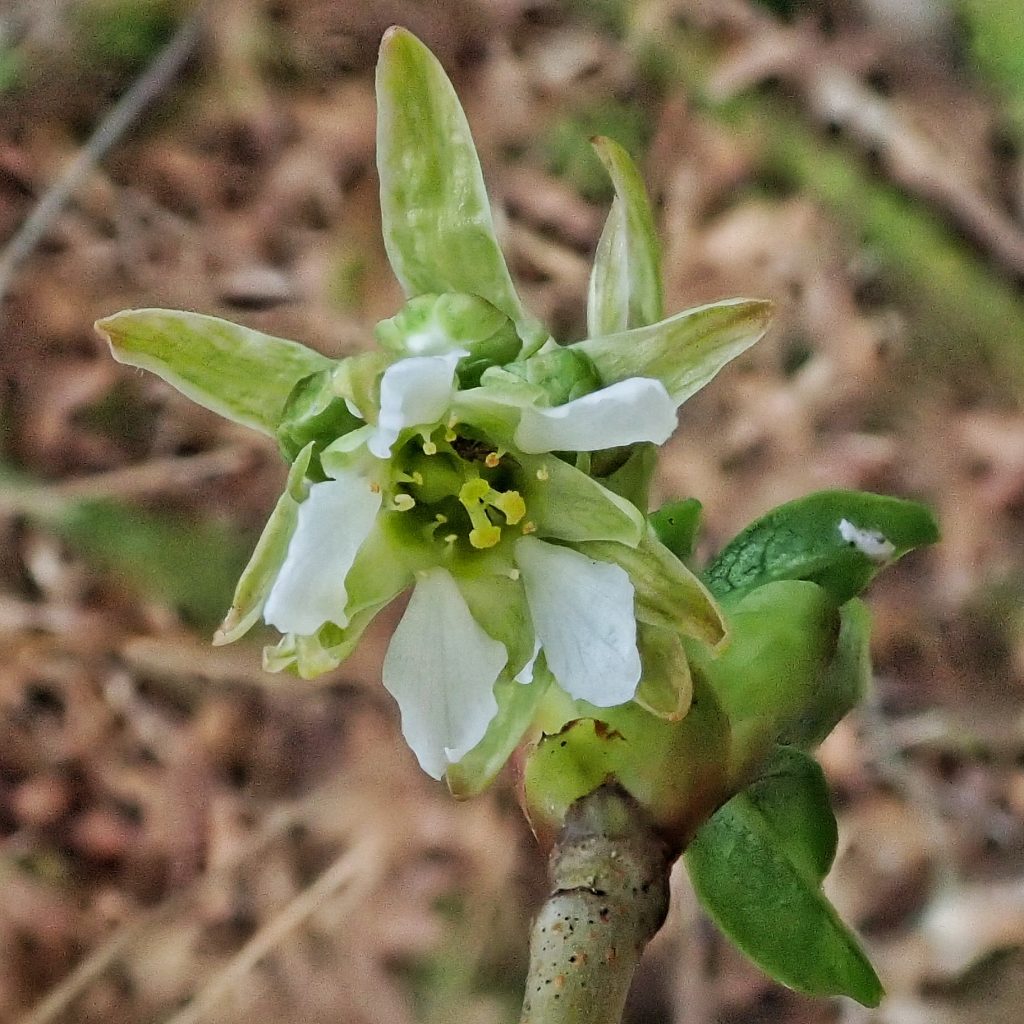
Oemleria cerasiformis | Indian Plum | Wildflowers of the Pacific Northwest
https://landscapeplants.oregonstate.edu/plants/oemleria-cerasiformis
E-Flora BC: Electronic Atlas of the Flora of BC
https://calscape.org/Oemleria-cerasiformis-()
https://plants.usda.gov/factsheet/pdf/fs_oece.pdf
https://en.m.wikipedia.org/wiki/Oemleria

This is wonderful. I’m heading out to Nisqually this morning where I think I have seen these. It’s so nice to know what they are and how they contribute in these waning winter days. Thanks !
So cool. I always hope that may happen when I write something. Did you find any?